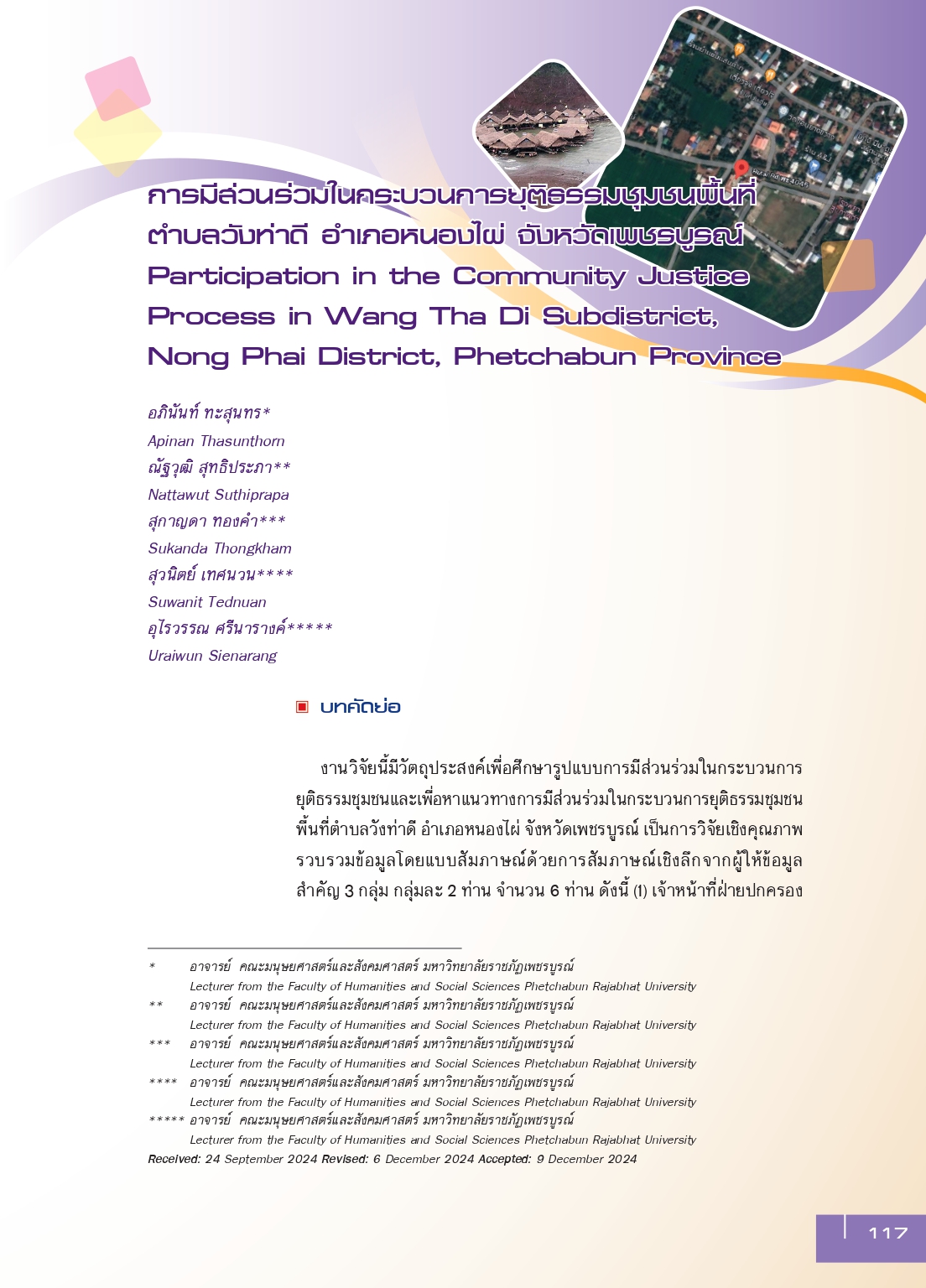Fear of Sex Crimes among Secondary School Students in Bangkok
Main Article Content
Abstract
The purpose of this research is to study the level of fear of sex crimes among secondary school students in Bangkok, the risk perception of sex crime victimization among secondary school students in Bangkok, and the perception of sex crime-related news among secondary school students in Bangkok. The samples included 400 secondary school students in Bangkok from single-sex schools for male and female students and coed schools by using quantitative research methodology. Data were collected via the research questionnaire. The statistics used for data analysis included frequency, percentage, average, standard deviation, independent t-test, one-way ANOVA, and multiple linear regression analysis.
The results revealed that the majority of the samples were female senior high school students who studied in coed schools. Most of them perceived sex crime-related news from various online media, such as Facebook, Instagram, Twitter, TikTok, etc. The frequency of perceiving sex crime-related news was 1-3 times/week. Their risk perception of sex crime victimization was at a high level, in which action was at a high level, followed by talking at a high level and thinking at a high level, respectively. The overall fear of sex crimes in school was at a moderate level. The overall fear of sex crimes in the family was at a low level. The overall fear of sex crimes in public areas was at a high level. When the level of fear of sex crimes was compared across secondary school students of different genders, grades, and schools, there was a statistically significant difference in the level of fear of sex crimes in school, family, and public area at the 0.05 level of significance. The students with different frequency of sex crime-related news perception exhibited no statistically significant difference in the fear of sex crimes in school, family, and public area at the 0.05 level. There was a statistically significant correlation between the risk perception of sex crime victimization and the fear of sex crimes among the students at the 0.05 level. The level of fear of sex crimes among the students was predictable at 15 percent.
Article Details

This work is licensed under a Creative Commons Attribution-NonCommercial-NoDerivatives 4.0 International License.
Published Manuscripts are the copyright of the Journal of the Justice System. However; the opinions that appeared in the content are the sole responsibility of the author.
References
Agenda. (2023, March 8). “International Women's Day” How many sexual crimes are there throughout Thailand?. https://agenda.co.th/featured/thai-sex-crime-and-criminal-itwd2023/
Akkrima Sukdee & Thanyalak Bangchada. (2022). Social factors and sexual violence in Thailand. Thammasat Journal, 41(1), 161-177.
Annop Chubamrung. (1990). Crime victims. Kasetsart University. https://kukr.lib.ku.ac.th/kukres/index.php?/BKN/searchdetail/result/197614
Apiraya Nijchanphansri. (2014). Self-protection behavior from being a victim of sexual crimes of female secondary school students in Surat Thani Province [Unpublished doctoral dissertation or Unpublished master's thesis]. Thammasat University.
Ceta Worldwide Education UK School Guide 2020. (2020). Differences between all-girls, all-boys and co-educational schools. https://www.ceta.co.th/ebook/UK-2020/files/basic-html/page62.html
Custers, K. & Bulck, Jan Van den. (2011). The relationship of dispositional and situational fear of crime with television viewing and direct experience with crime. Mass Communication and Society, 14(5), 600-619.
Dailynews. (2022). Shocking crime surges 6 times, child abuse online. https://www.dailynews.co.th/articles/1698430/
Ekkaphop Intawiwat. (1999). Factors related to violence in sexual crimes.Only prisoners convicted of rape. Thammasat University.
Garofalo, J. (1981). The fear of crime: Causes and consequences. The Journal of Criminal Law and Criminology, 72(1), 839-857.
Jutharat Ua-amnoey. (2007). Factors at risk of becoming victims of sexual crimes among Thai women. Chulalongkorn University Press.
Jutharat Ua-amnoey. (2008). Sociology of crime. Chulalongkorn University Press.
Lapassarada Palaphinyo. (2001). The role of police officers in controlling and preventing social problems in entertainment venues [Unpublished doctoral dissertation or Unpublished master's thesis]. Chiang Mai University.
Mark, W. (1984). Fear of victimization: Why are women and the elderly more afraid. Social Science Quarterly, 65(3), 681-702.
Nisaphon Raksatham. (2016). Fear of sexual crimes among women traveling in cars [Unpublished doctoral dissertation or Unpublished master's thesis]. National Institute of Development Administration.
Parinya Jitkarnateekit. (1996). Offenses of rape and indecency (2nd edition). Niti Tham Publishing House.
Prapon Sahapatthana et al. (2013). Report of the complete results of the study of the efficiency evaluation project. Police stations and public confidence in police operations for fiscal year 2013. National Institute of Development Administration.
Surachai Woranethipho. (2013). Causes of being a victim of rape in children: Study of specific districts in the area under responsibility of the Special Prosecutor's Office, Juvenile and Family Cases Division 5 [Unpublished doctoral dissertation or Unpublished master's thesis]. Rangsit University.
Thairath. (2020, December 8). Statistics of 7 years of sexual harassment of students. Teachers have no right to make mistakes. https://www.thairath.co.th/scoop/1988528


